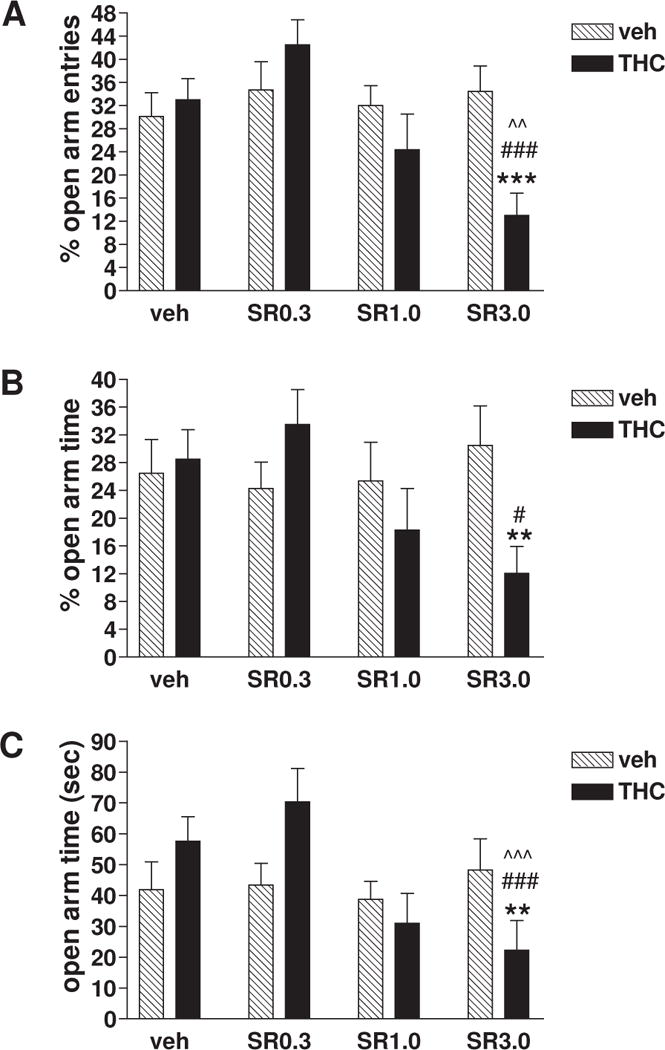Fig. 1. The anxiety measures (A. % open arm entries; B. % open arm time; C. open arm time (sec)) for the effects of SR141716 or vehicle challenge on EPM behaviors of mice repeatedly treated with vehicle or THC.

Mice were placed in the center of the maze facing an open arm and their behaviors videotaped and recorded for 5 min. SR141716 (SR) dose (0.3, 1.0 or 3.0 mg/kg, i.p.)-dependently decreased % open arm entries (A), % open arm time (B) and open arm time (sec) (C), and thereby suppressed the open arm exploration of the EPM, in mice repeatedly treated with THC (10 mg/kg, s.c.) rather than vehicle. Veh/veh n=15, THC/veh n=10, veh/SR0.3 n=10, THC/SR0.3 n=10, veh/SR1.0 n=10, THC/SR1.0 n=10, veh/SR3.0 n=15, THC/SR3.0 n=15. Data represent mean ± SEM, which were analyzed by two-way ANOVA with Bonferroni post-hoc tests. The significance is denoted by ** p < 0.01 and *** p < 0.001 vs mice repeatedly treated with vehicle and then challenged with SR141716 at a dose of 3.0 mg/kg, by # p < 0.05 and ### p < 0.001 vs mice repeatedly treated with THC and then challenged with SR141716 at a dose of 0.3 mg/kg, and by ˆˆ p < 0.01 and ˆˆˆ p < 0.001 vs mice repeatedly treated THC and then challenged with vehicle.
